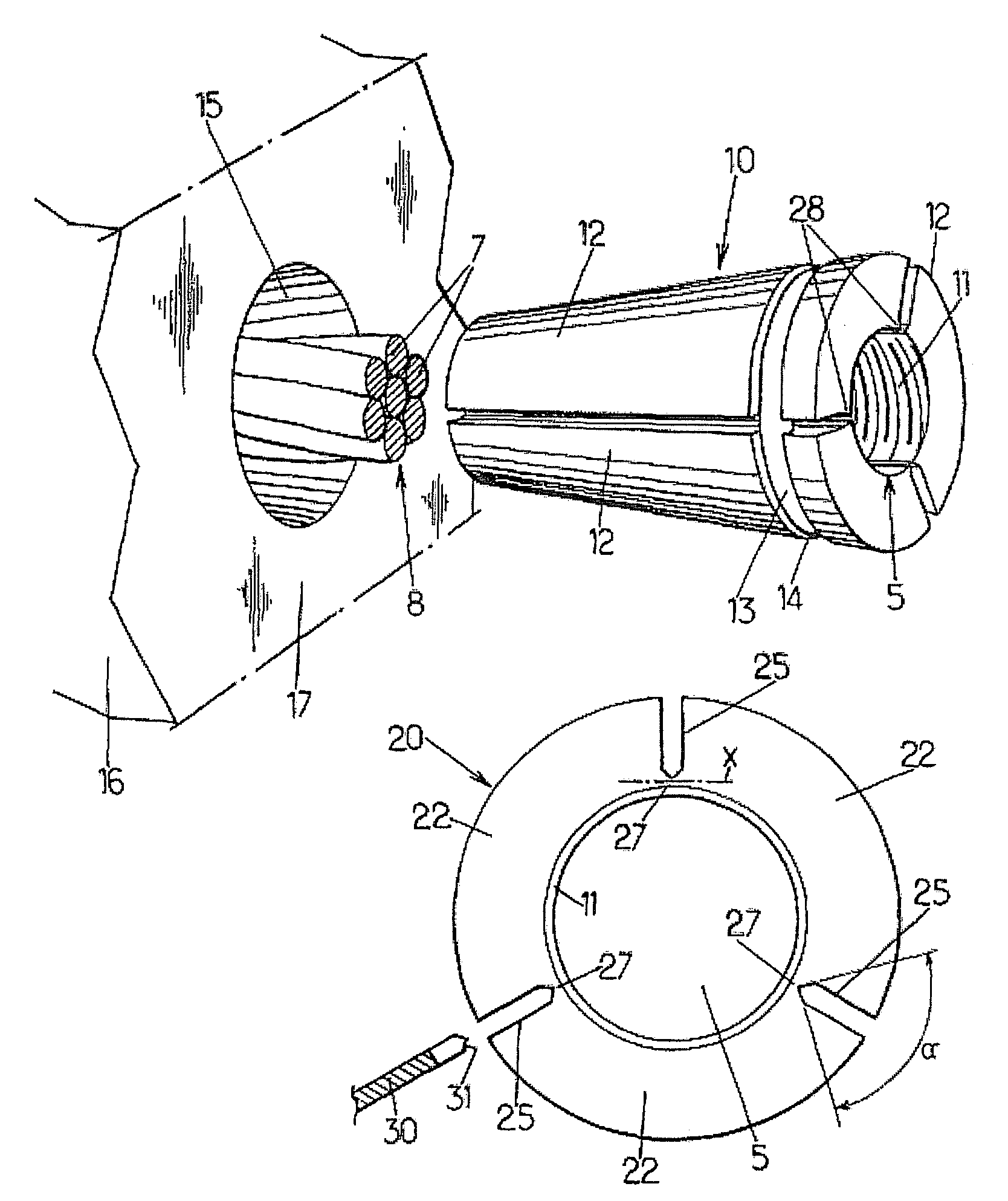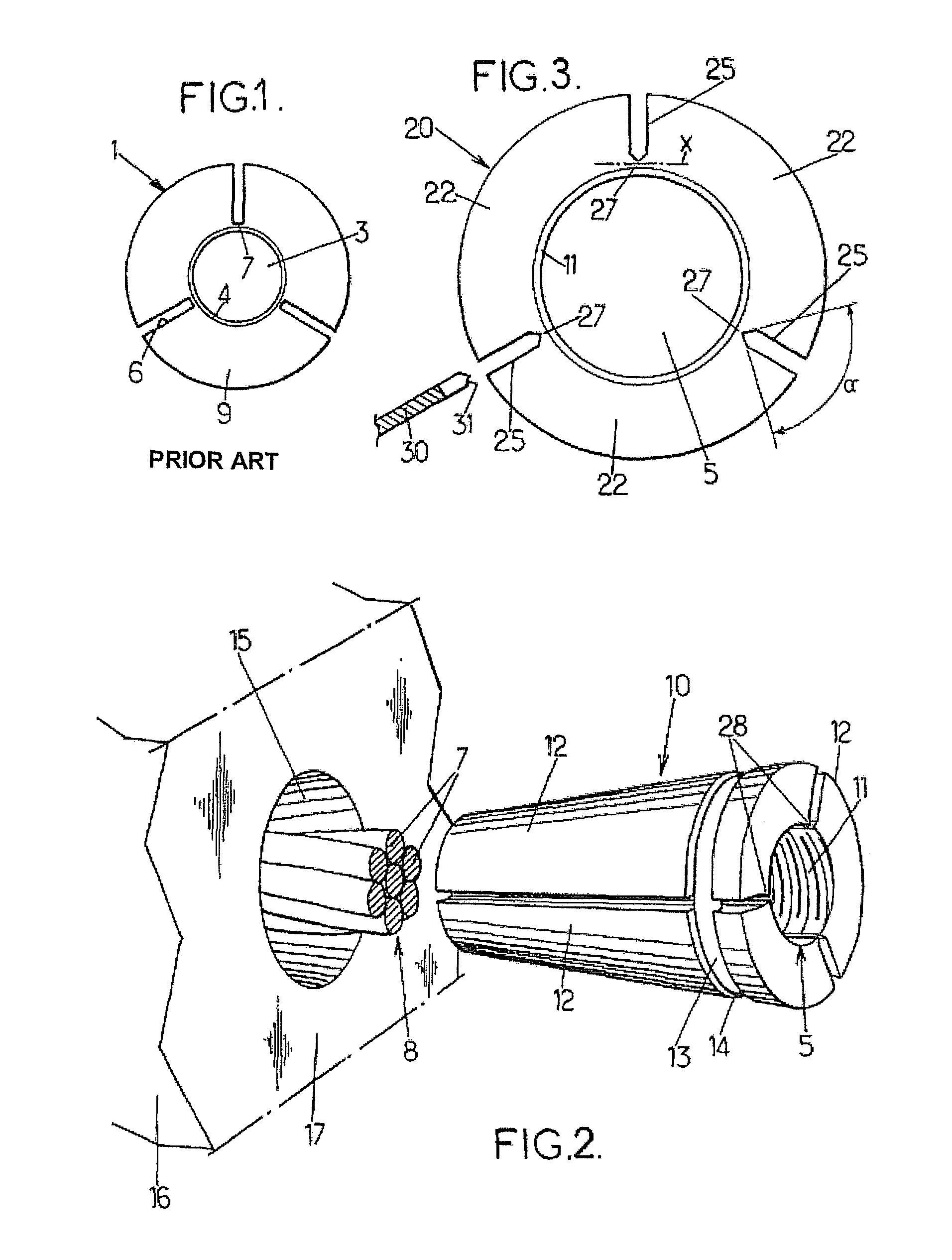Single-piece part for making a cable anchoring jaw and method for making such a jaw
- Summary
- Abstract
- Description
- Claims
- Application Information
AI Technical Summary
Benefits of technology
Problems solved by technology
Method used
Image
Examples
Embodiment Construction
[0031]FIG. 2 illustrates the shape of an anchoring jaw 10 according to the invention, used to clamp a cable tendon 8 such as, e.g., a pre-stressing or stay cable strand. This exemplary jaw 10 has a generally frusto-conical shape with a central cylindrical bore 5, through which the strand 8 will be inserted, the internal wall of the bore having transverse striations 11 to provide a tight grip on the strand. This frusto-conical shape is divided into three angular segments of 120 degrees, formed by three identical wedges 12. These wedges 12 are assembled by means of an ring 13 located in a circumferential groove 14 close to the widest end of the jaw.
[0032]This jaw 10 engages a matching frusto-conical orifice 15 provided in an anchoring block 16. The procedure for anchoring a strand is as follows: the strand 8 is threaded through the orifice 15; the jaw 10 is placed around this strand; traction is applied to the strand at the part projecting beyond the external face 17 of the anchoring ...
PUM
| Property | Measurement | Unit |
|---|---|---|
| Thickness | aaaaa | aaaaa |
Abstract
Description
Claims
Application Information
 Login to View More
Login to View More - R&D
- Intellectual Property
- Life Sciences
- Materials
- Tech Scout
- Unparalleled Data Quality
- Higher Quality Content
- 60% Fewer Hallucinations
Browse by: Latest US Patents, China's latest patents, Technical Efficacy Thesaurus, Application Domain, Technology Topic, Popular Technical Reports.
© 2025 PatSnap. All rights reserved.Legal|Privacy policy|Modern Slavery Act Transparency Statement|Sitemap|About US| Contact US: help@patsnap.com


